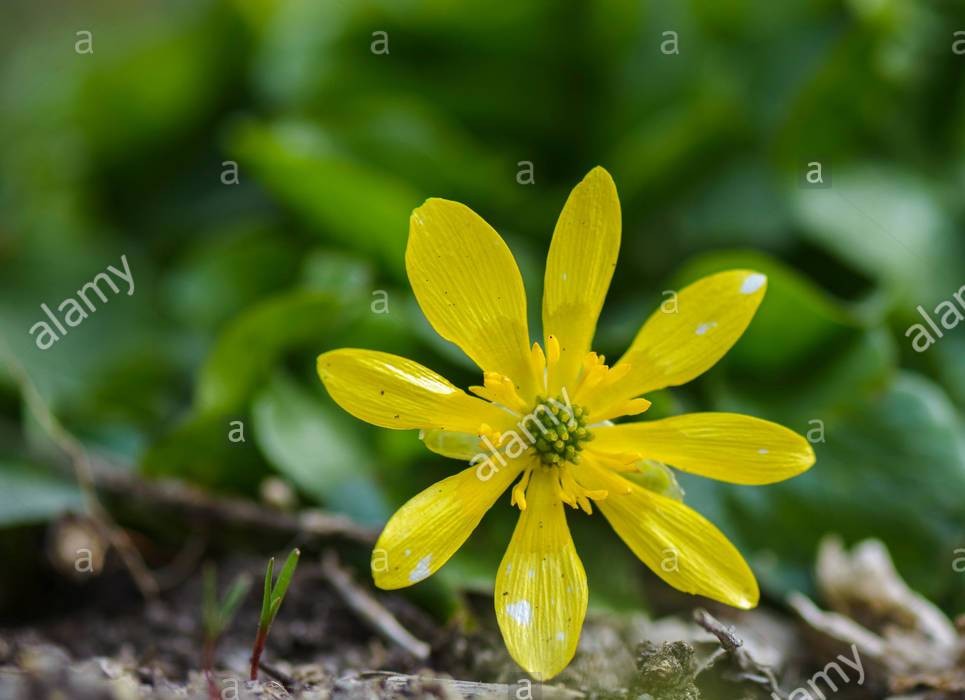Pilewort
(Ficaria verna verna)

Description
Ficaria verna verna, commonly known as the lesser celandine or pilewort, is a small but vibrant flowering plant that belongs to the Ranunculaceae family. It is native to Europe and parts of Asia, and has been introduced to North America and other parts of the world as an ornamental plant. In this article, we will dive deep into the lesser celandine, exploring its physical characteristics, habitat, uses, and potential drawbacks. Physical Characteristics The lesser celandine is a perennial herbaceous plant that typically grows up to 10-30 cm in height, with a spread of 20-40 cm. It has glossy, heart-shaped leaves that are typically around 3-12 cm in length, and small, bright yellow flowers that bloom in early spring. The flowers have eight petals and are arranged in clusters at the end of a single stem. The plant also has small, bulb-like tubers that grow on its roots, which give it its alternative common name of "pilewort." Habitat The lesser celandine is a hardy plant that can grow in a variety of habitats, including damp meadows, woodlands, hedgerows, and riverbanks. It prefers moist, well-drained soil and can tolerate shade or partial sun. It is commonly found throughout Europe, from Spain to Scandinavia, and has also been introduced to North America, where it is considered an invasive species. Uses The lesser celandine has a long history of medicinal use, dating back to ancient times. It was used by the Greeks and Romans to treat various ailments, including hemorrhoids and liver problems. In traditional European medicine, the plant was used as a diuretic and astringent, and was also believed to have anti-inflammatory and antiseptic properties. The bulb-like tubers of the plant were used to treat piles, hence the name "pilewort." In modern times, the lesser celandine is still used in herbal medicine for its diuretic and anti-inflammatory properties. It is also used in homeopathy, where it is believed to be useful in treating conditions such as joint pain and anxiety. Potential Drawbacks While the lesser celandine has many beneficial uses, it also has the potential to be invasive and cause ecological damage. In North America, it has been introduced as an ornamental plant and has quickly spread throughout many areas, outcompeting native plant species and altering ecosystems. In some areas, it is considered a noxious weed and efforts are being made to control its spread. Additionally, the plant contains a toxic compound called protoanemonin, which can cause skin irritation and blistering in humans and animals. This compound is present in all parts of the plant, including the flowers and leaves, and can be released when the plant is crushed or cut. Conclusion The lesser celandine is a small but mighty plant that has been used for centuries for its medicinal properties. However, its potential to be invasive and its toxicity to humans and animals should not be overlooked. As with any plant, it is important to use caution and proper handling techniques when dealing with the lesser celandine. With the right care and management, this plant can be a valuable addition to gardens and natural areas, providing early spring color and ecological benefits.
Taxonomic tree:







